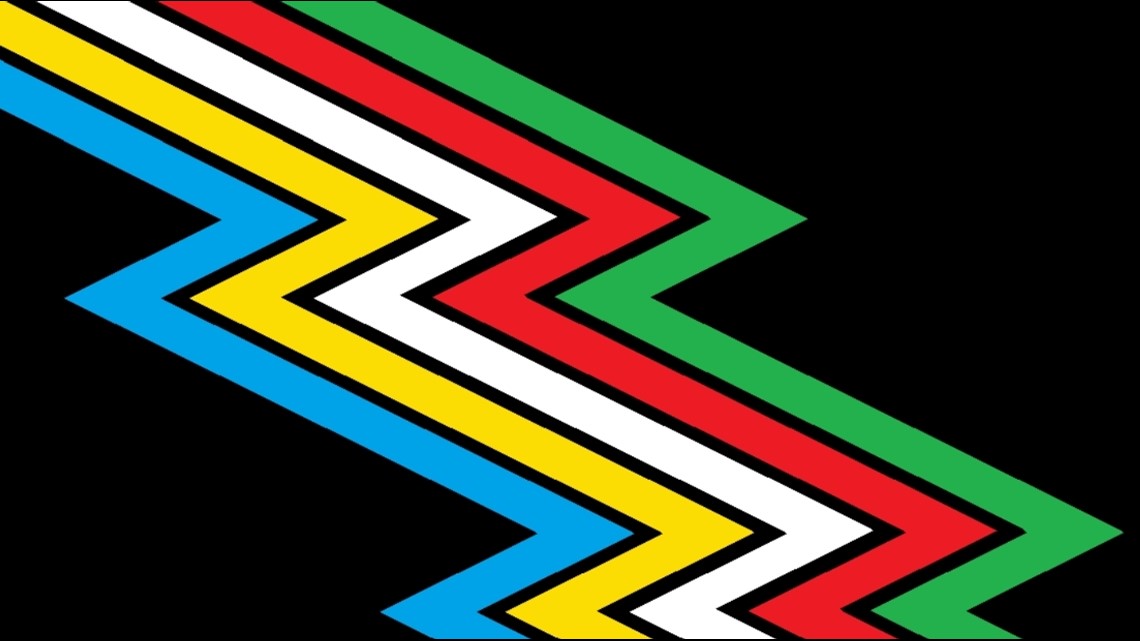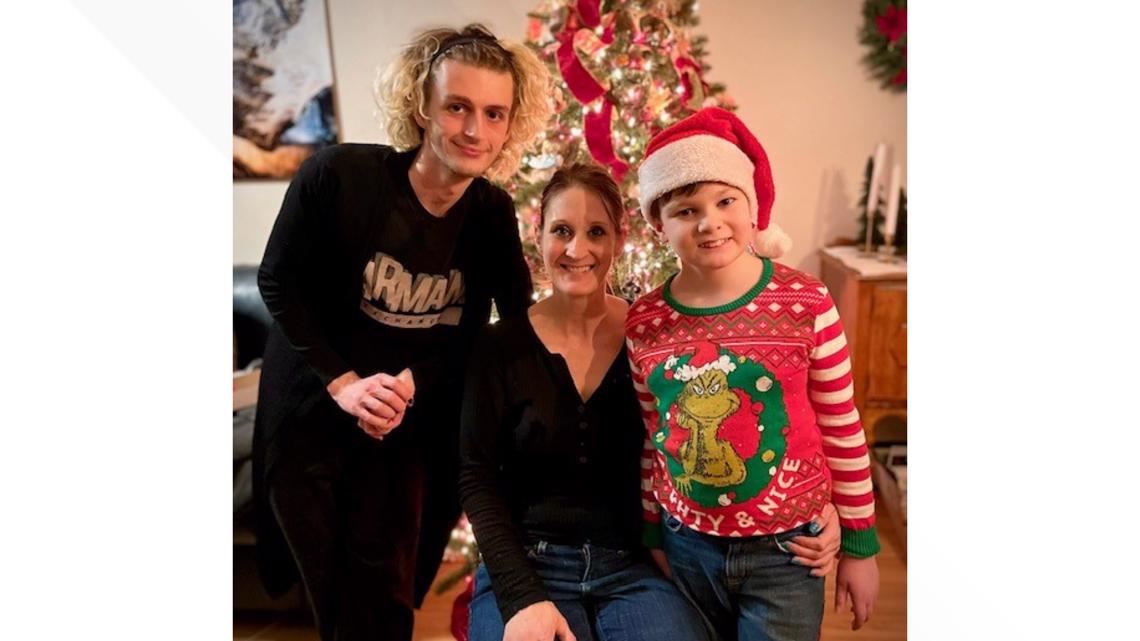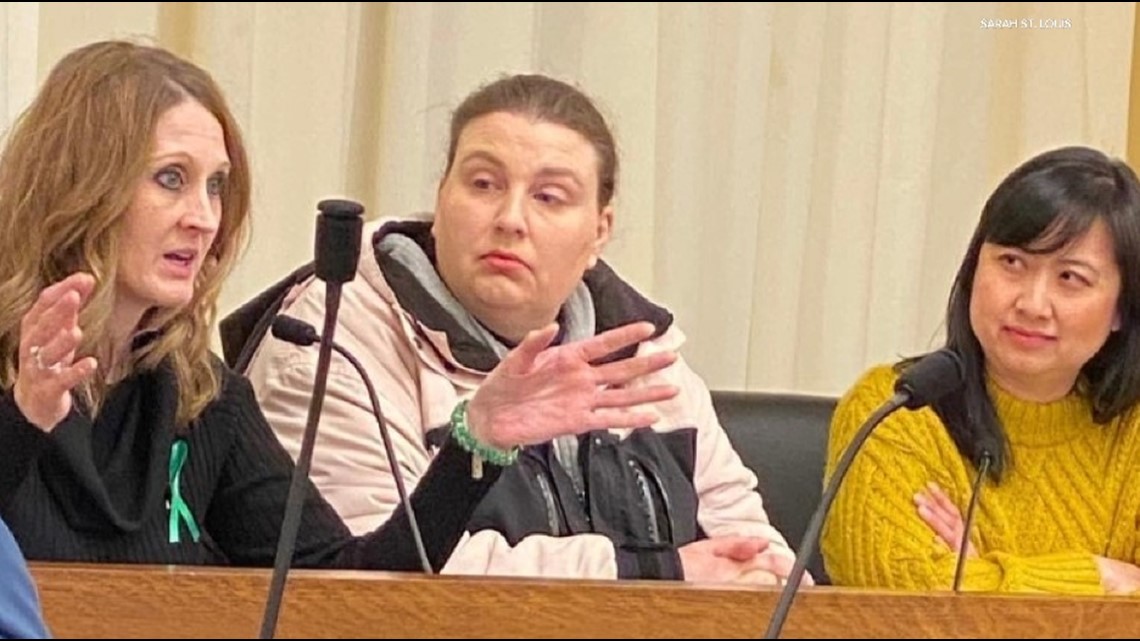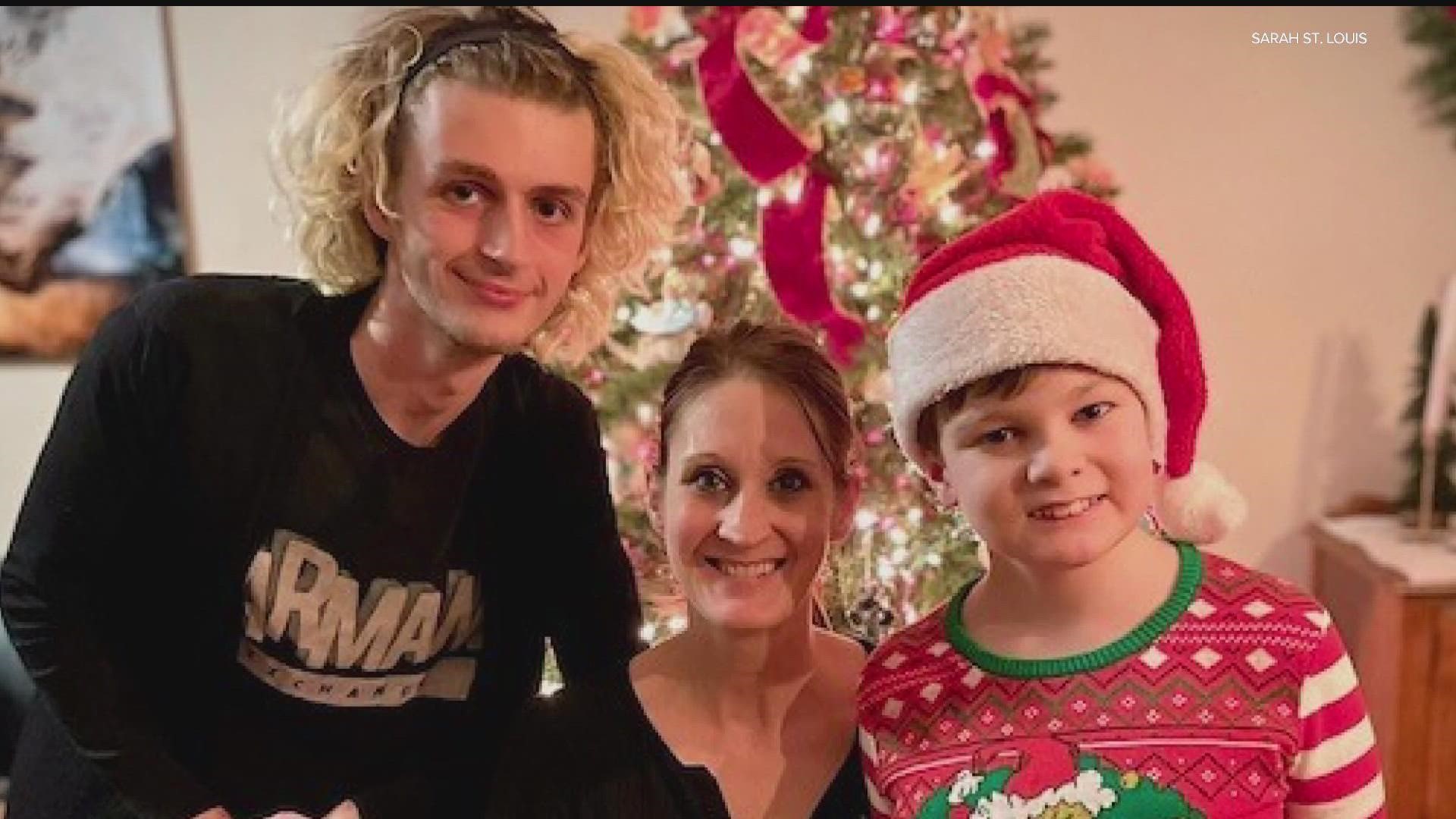SHOREWOOD, Minn. — Each July, you'll see a unique flag flying outside Sarah St. Louis' home in Shorewood. The vibrant emblem consists of a black background with colorful, zigzag stripes running from the top left corner to the bottom right. Together, the blue, yellow, white, red, and green stripes appear lightning bolt-like.
St. Louis says she gets a lot of questions about it, and shares more details on this week's Communities that KARE.
"I’ve had a lot of people ask – what does that flag mean?" she said.
She's happy to start the conversation: it's the Disability Pride Flag, created by Ann Magill, a member of the disability community. July is Disability Pride Month.
The flag, seen below, is the initial version created by Magill. The black background represents the suffering and rebellion of those in the disability community.


According to the American Federation for the Blind, "The lines are considered to be a lightning bolt and each color represents something unique about the disability community. The lightning bolt represents how individuals with disabilities must navigate barriers, and demonstrates their creativity in doing so. The five colors represent the variety of needs and experiences: mental illness, intellectual and developmental disabilities, invisible and undiagnosed disabilities, physical disabilities, and sensory disabilities."
In July 2021, Magill worked with the disability community to update the emblem to the newer version, pictured below.
According to Magill's blog, "Early in July, 2021 it came to my attention that, even with desaturated colors, The zigzag design can, when viewed online (especially while scrolling), create a strobe effect, and pose a risk for people with epilepsy, and migraine sufferers...Therefore, several people in the Disability community on Tumblr, collaborated and came to a consensus on a new design."


St. Louis is an architect and frequently works with companies to make sure they are ADA compliant and provide accessible, welcoming spaces for those with disabilities. But she has a more personal reason for flying the flag: her two sons live with disabilities.
St. Louis says her oldest, Treven Bolton, is an empathetic "social justice warrior" who stands up for what is right. He happens to live with anxiety and depression, and has sought both inpatient and outpatient treatment for mental health reasons.
Her youngest, Ezra Tuller, she describes as someone who "radiates joy" and loves to tell stories. When Ezra was younger, he suffered from a traumatic brain injury and now has cognitive and physical disabilities.


St. Louis couldn't be more proud of her two sons and hopes the rest of the community can see why Disability Pride Month is meaningful.
"It's important because it gives people the opportunity to hear and see people with disabilities and amplify the voices of people with disabilities," she said. "For centuries we've kept them hidden... we've tried to keep them out of society."
She says there are a few simple things people can do to make spaces more accessible and welcoming to people with disabilities.
Language
"Words like 'handicapped' is actually a very derogatory term for people in the disability community," St. Louis said. Instead, try person-first language, such as "person with a disability."
When referring to restrooms or parking spaces for those with disabilities, use the word "accessible."
She adds, "The words 'stupid, idiot, moron'... are derogatory terms. Trying to expand your language and being respectful towards the disability community."
St. Louis recommends reading this article to learn more about language use.
Accessible restroom use
Simply put -- if you don't need to use the accessible restroom, don't.
"It takes away the ability of people with disabilities being able to use that."
She says an added disadvantage when it comes to restroom use is the lack of adult-sized changing tables in public restrooms.
"When you're over the age of 1 or 2, you no longer fit on a changing table, so having that a part of our building codes."
Hiring accessibility compliance officers
Urge your company to consider a person to serve as a director of accessibility compliance.
"Ableism runs pretty rampant in the workplace, whether it's in their marketing, their communication... their store layouts, their office layouts. Putting product in aisles is one of the hardest things we have to navigate."


Above all, St. Louis says take the time to listen to the voices of people with disabilities around you.
"Having a disability is not shameful. It's a very normal and natural part of the human journey, and this community has led me to meet some of best people I've met in my life."
Tuesday, to commemorate the 32nd anniversary of the signing of the Americans with Disabilities Act, Minnesota organizations are teaming up to host a virtual celebration. To learn more about Minnesota's resources for people with disabilities, visit this site.
Do you know someone making a difference in the community, and think they should be featured on Communities that KARE? Fill out the form below, and let us know all about them!
Watch all of the latest stories from Communities that KARE in our YouTube playlist:

